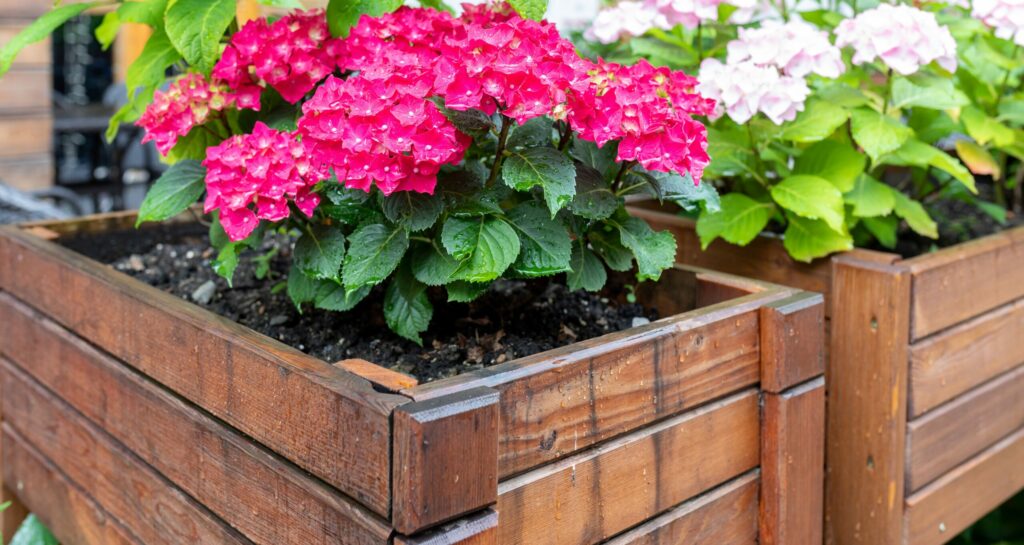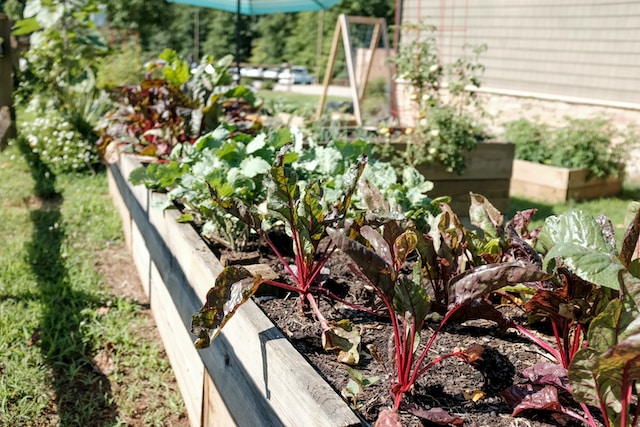Best Garden Box: Exploring the Top-Tier Choices
Garden boxes are a great way to start or enhance your home gardening experience. They offer a convenient and manageable space to grow plants, herbs, and vegetables. In this review, we’ll examine different garden box products and evaluate their features, performance, and overall value for money so that you can pick the best one for your needs.
FOYUEE Portable Galvanized Metal Outdoor Raised Elevated Planter Box Garden Bed with Legs and Wheels for Vegetables, Fruits, Flowers, and Herbs, Gray
Best overall
FOYUEE Planter Boxes galvanized steel construction ensures long-lasting use, and its raised height prevents pests or animals from destroying your plants. Its drainage hole prevents waterlogging.
Pros
- Long-lasting build quality
- Elevated height prevents bending and animal invasion
- Drainage hole for proper water management
- Tool storage space underneath
- Fast assembly
Cons
- The wheels can’t handle the weight of the box
Jumbl Raised Canadian Cedar Garden Bed | Elevated Wood Planter for Growing Fresh Herbs, Vegetables, Flowers, Succulents & Other Plants at Home | Great for Outdoor Patio, Deck, Balcony | 34x18x30”
Runner up
Made from wood, Jumbl’s Raised Garden Bed promises lasting durability with easy and stress-free access to your plants, courtesy of its raised height. It includes a garden liner to keep soil in place.
Pros
- Durable and sturdy wood build
- Raised height for comfortable gardening
- Includes garden liner to keep soil in place
- Simple and fast set-up
Cons
- Its small size can’t hold many plants
Land Guard Galvanized Raised Garden Bed Kit, Galvanized Planter Raised Garden Boxes Outdoor, Oval Large Metal Raised Garden Beds for Vegetables……
Budget pick
Land Guard Garden Bed is an affordable and unique planter box with ample space to grow many plants. It has an open-end base to dredge water when necessary and comes in many lovely colours.
Pros
- Low price
- Provides a large area to grow and nurture plants
- Open-end base to dredge water and prevent overlogging
- Minimal set-up required
- Available in many fascinating colours to personalize your garden
Cons
- Not very sturdy
Keter Urban Bloomer 12.7 Gallon Resin Plastic Wood Look Elevated Raised Patio Garden Flower Planter Bed, Graphite
Best premium
The Keter Garden Bed features a simple, elevated design for minimalist gardening enthusiasts. Its built-in watering and drainage system makes it a top choice for hassle-free gardening.
Pros
- Sturdy and high-quality build
- Simple and ergonomic design for convenient use
- It comes with a water reservoir
- Built-in drainage system
Cons
- Few complaints about the water gauge not working well
KING BIRD Raised Garden Bed 68"x 36"x 12" Galvanized Steel Metal Outdoor Garden Planter Box Kit with 8pcs T-Type Tags & 2 Pairs of Gloves (Dark Grey)
Also good
With a width of 35.5” and length of 68”, this 12” raised garden box offers ample space to start a small backyard garden. It boasts a durable and sturdy construction, coated to prevent rust.
Pros
- Ample space for a backyard garden
- Sturdy build for long-lasting use
- Finished with galvanized paint to prevent rust
- Includes a pair of gloves and eight pieces of T-type tags
Cons
- Assembly is time-consuming
Garden box buying guide
Gardening can be a relaxing and rewarding hobby, but it requires a certain amount of planning and preparation. One of the most important decisions to make is choosing the right garden box for your needs. Garden boxes come in a variety of shapes, sizes, and materials, each with its own advantages and disadvantages. This guide will help you choose the right garden box for your garden by exploring the different types of boxes available, the materials they are made from, and the features to consider.

Types of garden boxes
1. Raised beds
Raised beds are one of the most popular types of garden boxes, and for good reason. They offer several advantages over traditional in-ground gardens, including better soil drainage, improved soil quality, and easier access to planting, weeding, and harvesting. Raised beds can be made from a variety of materials, including wood, metal, and composite materials.
2. Planter boxes
Planter boxes are another popular type of garden box. They are typically made from wood, plastic, or composite materials and can be placed on a deck, patio, or balcony. Planter boxes are ideal for growing herbs, vegetables, and flowers in small spaces. They are also a great option for people who have mobility issues, as they can be raised off the ground for easier access.
3. Window boxes
Window boxes are a type of planter box that is designed to be mounted to a window or balcony railing. They are typically made from wood, plastic, or metal and are ideal for growing small plants and flowers. Window boxes are a great option for people who live in apartments or condos with limited outdoor space.
Materials
1. Wood
Wood is one of the most common materials used to make garden boxes, and for good reason. It is a natural material that is durable, attractive, and easy to work with. Cedar and redwood are popular choices for garden boxes because they are naturally resistant to rot and decay. However, other types of wood can also be used, including pine, spruce, and fir. If you choose to use wood for your garden box, be sure to choose a type of wood that is untreated and free of chemicals.
2. Composite materials
Composite materials are a newer option for garden boxes. They are typically made from a combination of recycled plastic and wood fibres and are designed to look like wood. Composite materials are durable, weather-resistant, and easy to maintain. They are also more expensive than wood, but they are a good option for people who want a long-lasting garden box that requires minimal maintenance.
3. Metal
Metal garden boxes are durable and attractive, but they can be expensive. They are typically made from steel or aluminum and can be painted or powder-coated to match your outdoor decor. Metal garden boxes are ideal for people who want a modern, sleek look for their garden.
3. Plastic
Plastic garden boxes are affordable and lightweight, making them a popular option for people who want an easy-to-maintain garden box. They are typically made from polyethylene or polypropylene and come in a variety of colours and sizes. Plastic garden boxes are ideal for people who want a low-maintenance garden box that is easy to move around.
Features to Consider

1. Size
The size of your garden box is important because it will determine how many plants you can grow. If you have limited space, consider a planter box or a smaller raised bed. For larger gardens, a larger raised bed may be the best option. Consider the dimensions of your garden space and the amount of sunlight it receives when choosing the size of your garden box.
2. Depth
The depth of your garden box is also important, as it affects the root growth of your plants. Deeper garden boxes allow for deeper root growth, which can improve the overall health of your plants. However, deeper garden boxes may require more soil and can be more difficult to maintain. A depth of at least 6 inches is recommended for most plants, while deeper boxes of 12 inches or more are ideal for root vegetables like carrots or potatoes.
3. Drainage
Good drainage is essential for a healthy garden. Your garden box should have adequate drainage holes or slats to prevent water from pooling and causing root rot. If your garden box is placed on a solid surface, you may need to add drainage material like gravel or sand to the bottom to improve drainage.
4. Accessories
Consider any accessories or add-ons that you may want to use with your garden box. For example, trellises can be added to support climbing plants like tomatoes or cucumbers. Garden box covers can help protect your plants from pests and harsh weather conditions. Irrigation systems can be added to make watering your plants easier and more efficient.
5. Location
Consider the location of your garden box when choosing the material and features. If your garden box will be exposed to direct sunlight for most of the day, consider a material that is less prone to warping or cracking, such as metal or composite materials. If your garden box will be placed in a shaded area, consider a material that is more resistant to moisture and rot, such as cedar or redwood.
Conclusion
Choosing the right garden box for your needs requires careful consideration of the types of boxes available, the materials they are made from, and the features to consider. Whether you choose a raised bed, planter box, or window box, make sure to consider the size, depth, drainage, and location of your garden box. By following these guidelines, you can create a healthy and thriving garden that will provide you with fresh fruits, vegetables, and herbs for years to come.


